
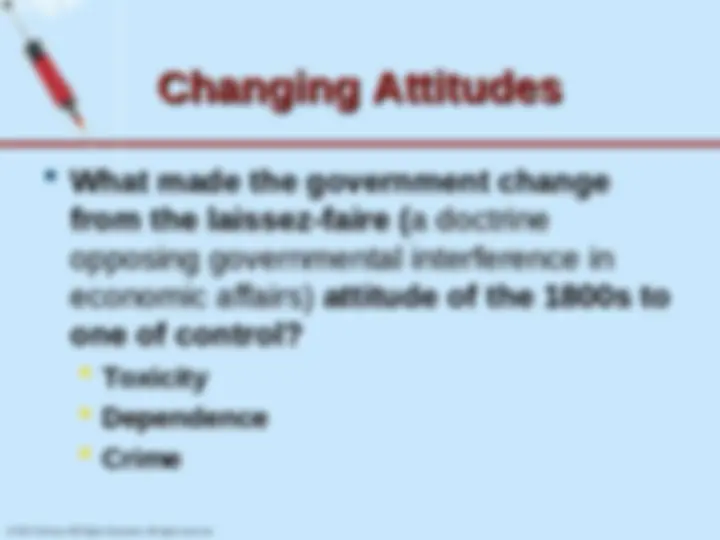
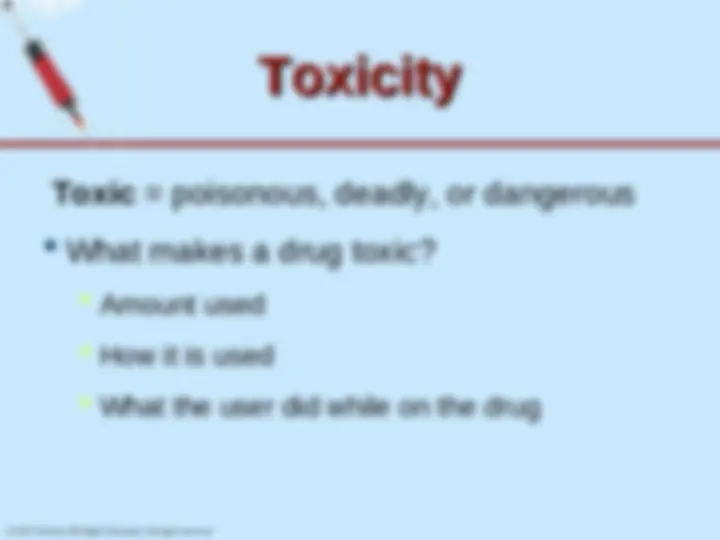

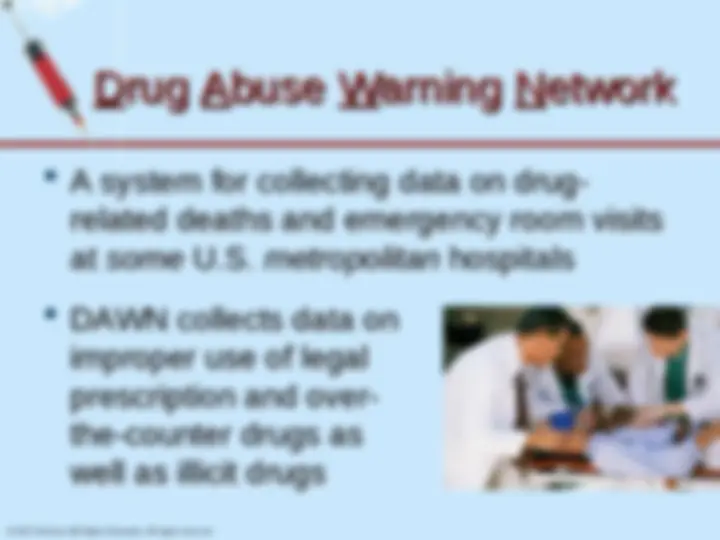
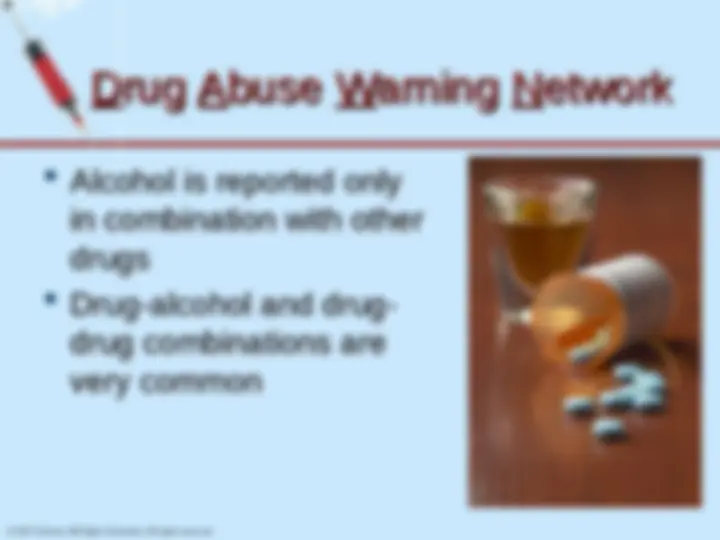
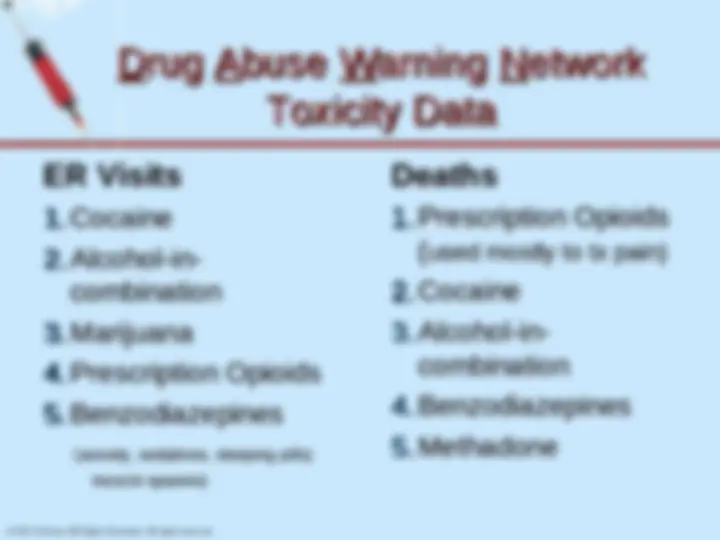
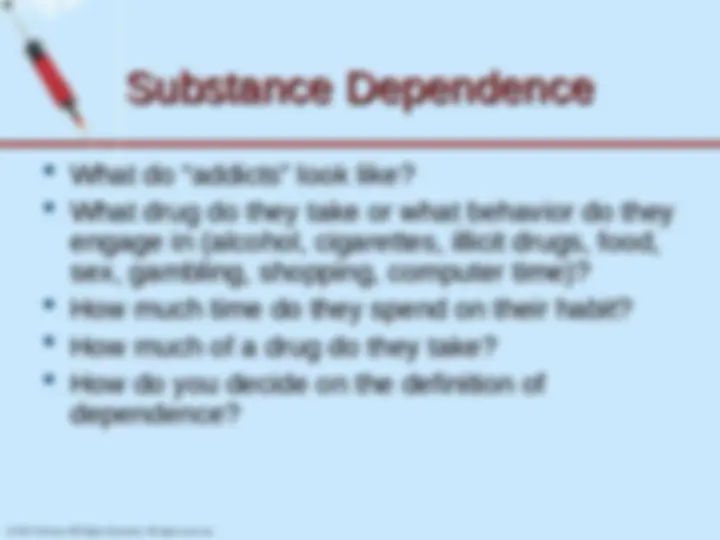
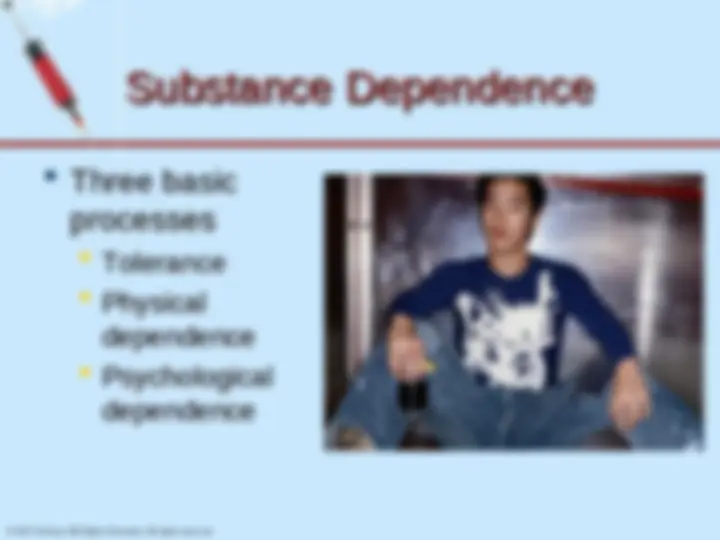
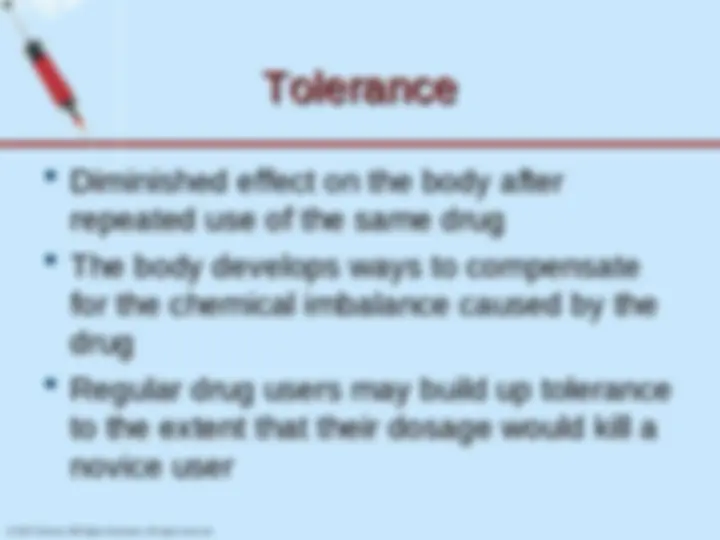
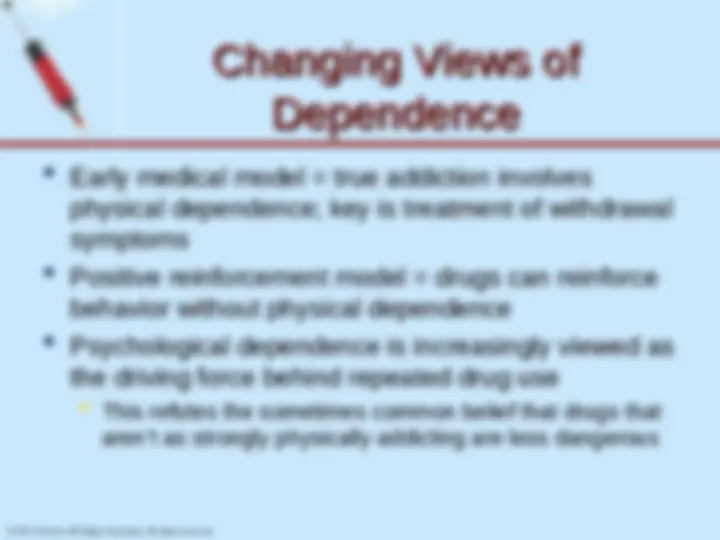
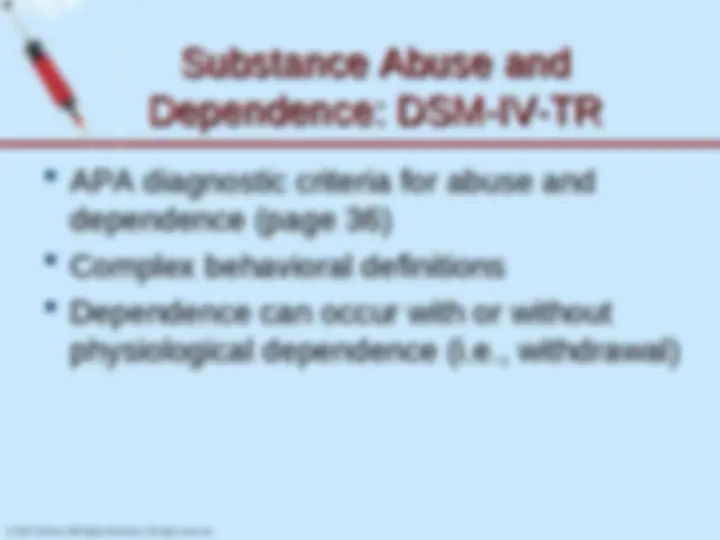
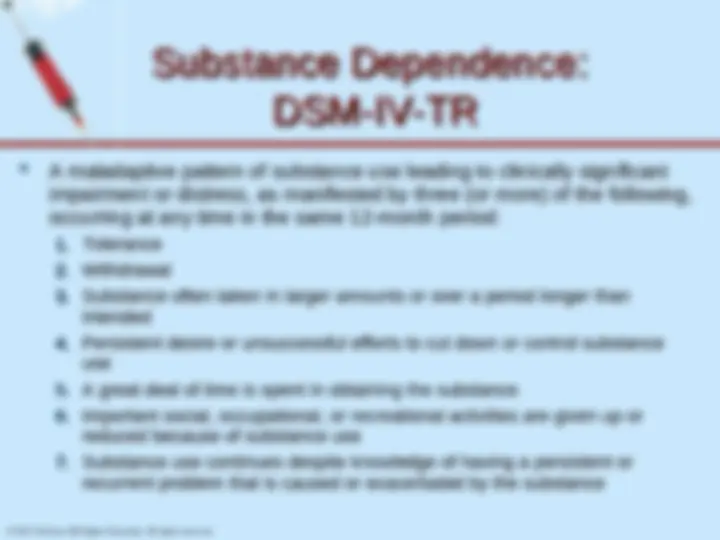
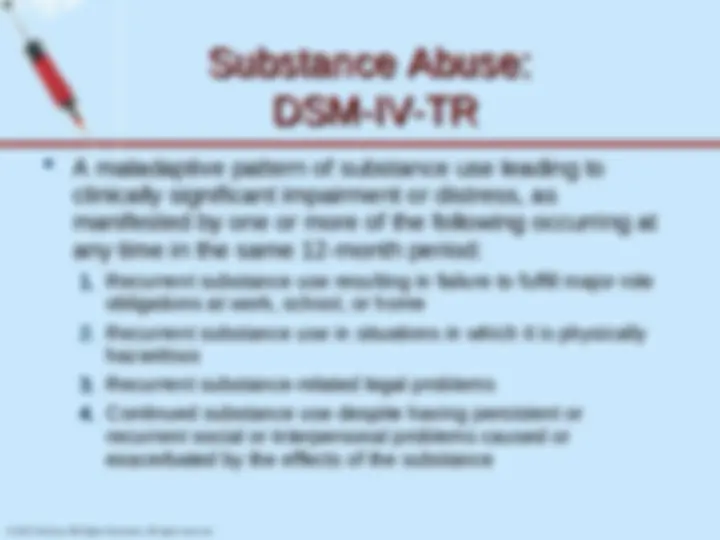
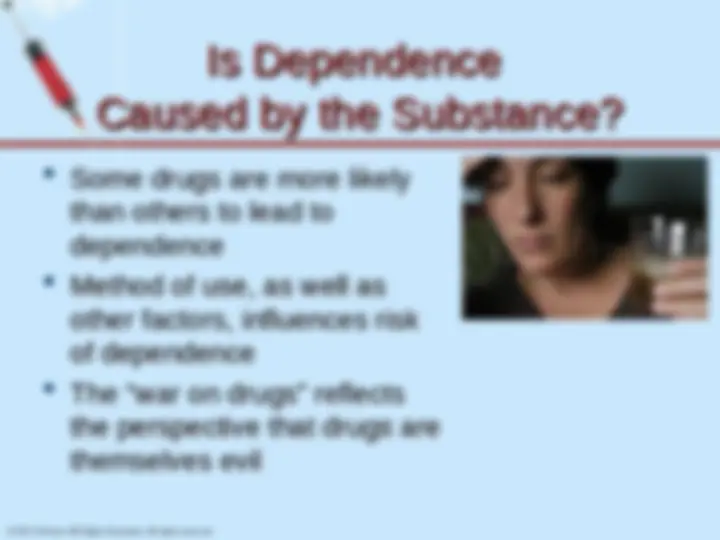
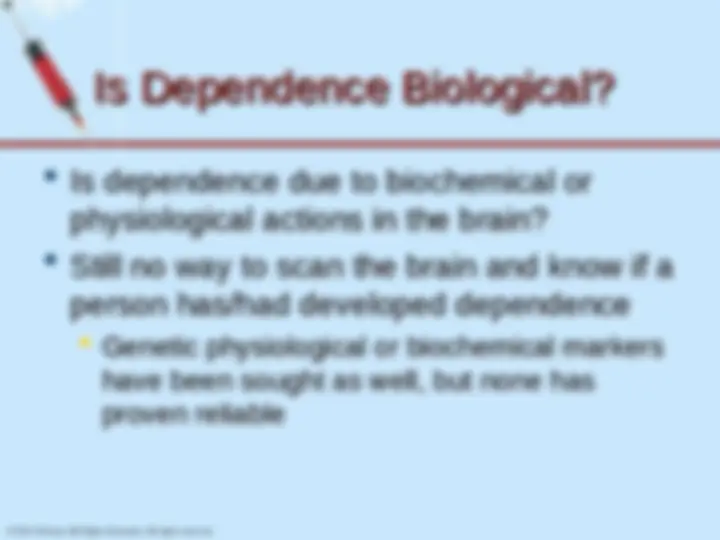
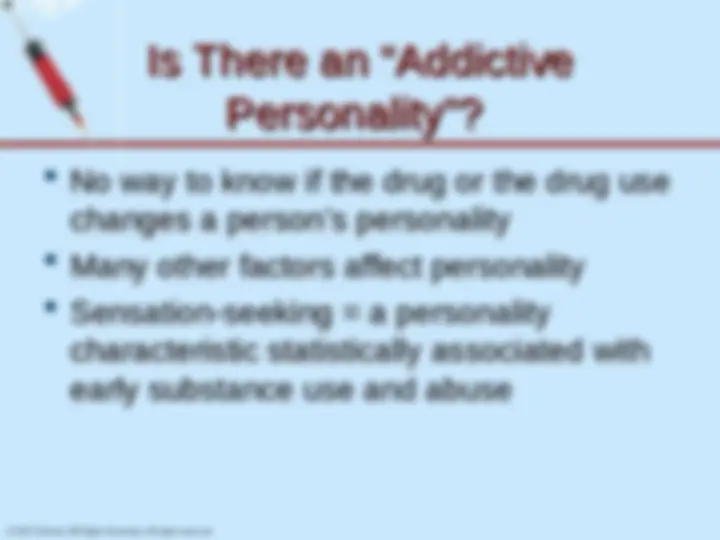
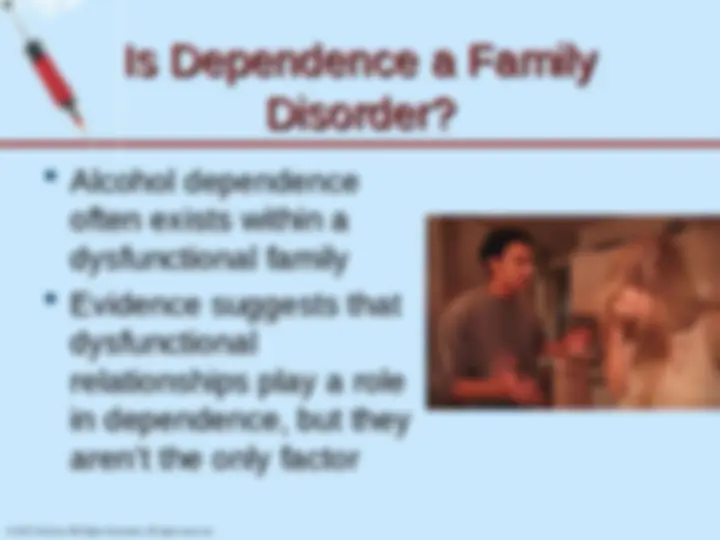
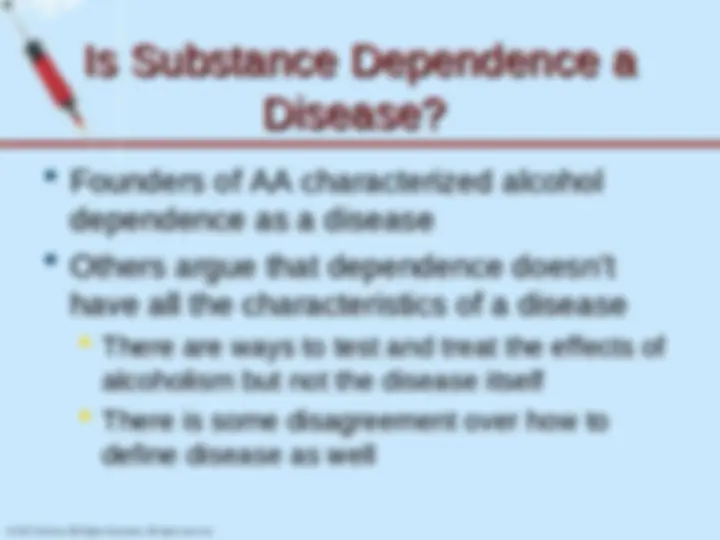
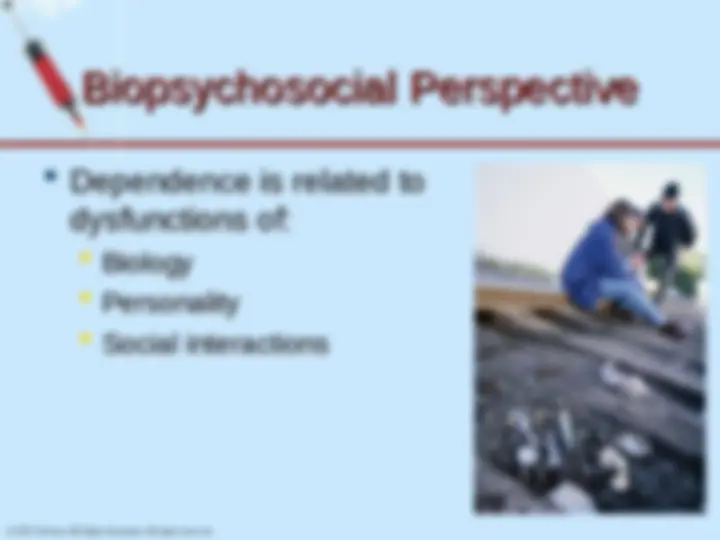
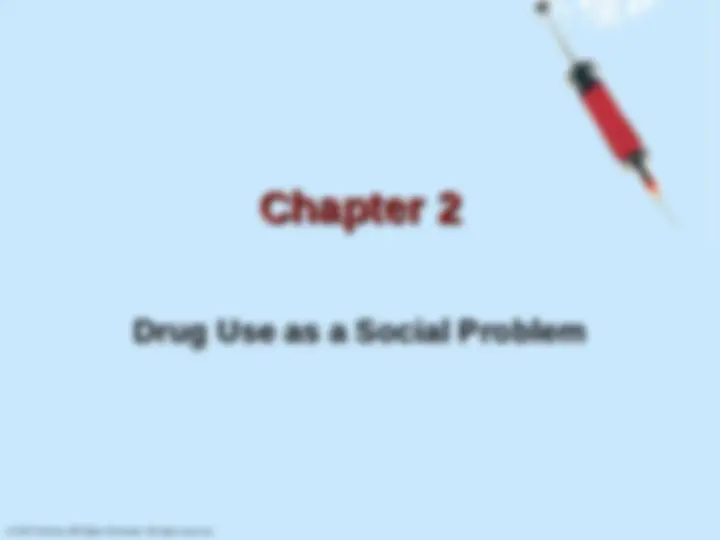


Study with the several resources on Docsity

Earn points by helping other students or get them with a premium plan


Prepare for your exams
Study with the several resources on Docsity

Earn points to download
Earn points by helping other students or get them with a premium plan
Community
Ask the community for help and clear up your study doubts
Discover the best universities in your country according to Docsity users
Free resources
Download our free guides on studying techniques, anxiety management strategies, and thesis advice from Docsity tutors
An in-depth analysis of various aspects of substance use and dependence, including the differences between physiological and behavioral toxicity, acute and chronic effects, drug-alcohol combinations, and the definition and causes of dependence. It also discusses the role of tolerance and physical and psychological dependence, as well as changing views on substance abuse and dependence.
Typology: Study notes
1 / 28

This page cannot be seen from the preview
Don't miss anything!





















Deaths
Emergency room visits
Drugs in the workplace and lost productivity
Broken homes, illnesses, shorter lives, etc.
Cost of maintaining habit
Cost of criminal behavior
Cost of treating patients
Fetal alcohol syndrome
Others?
Toxicity
Toxicity
Toxic = poisonous, deadly, or dangerous
What makes a drug toxic?
Amount used
How it is used
What the user did while on the drug
Physiological toxicity vs. behavioral toxicity
Physiological toxicity vs. behavioral toxicity
Acute effects vs. chronic effects
Acute effects vs. chronic effects
Acute behavioral toxicity (drunk driving) Chronic physiological toxicity (cirrhosis)
Examples of chronic toxicity
Examples of chronic toxicity
Behavioral
Behavioral
Personality and lifestyle changes
Personality and lifestyle changes
Effects on relationships with friends and family
Effects on relationships with friends and family
Physiological
Physiological
Heart disease
Heart disease
Lung cancer
Lung cancer
Cirrhosis
Cirrhosis
Other health effects
Other health effects
A system for collecting data on drug-
A system for collecting data on drug-
related deaths and emergency room visits
related deaths and emergency room visits
at
at some
some U.S.
metropolitan
metropolitan hospitals
hospitals
DAWN collects data on
DAWN collects data on
improper use of legal
improper use of legal
prescription and over-
prescription and over-
the-counter drugs as
the-counter drugs as
well as illicit drugs
well as illicit drugs
ER Visits
ER Visits
Cocaine
Cocaine
Alcohol-in-
Alcohol-in-
combination
combination
Marijuana
Marijuana
Prescription Opioids
Prescription Opioids
Benzodiazepines
Benzodiazepines
(anxiety, sedatives, sleeping pills)
(anxiety, sedatives, sleeping pills)
muscle spasms) muscle spasms)
Deaths
Deaths
Prescription Opioids
Prescription Opioids
(
( used mostly to tx pain)
used mostly to tx pain)
Cocaine
Cocaine
Alcohol-in-
Alcohol-in-
combination
combination
Benzodiazepines
Benzodiazepines
Methadone
Methadone
What it tells us about how dangerous a
What it tells us about how dangerous a
drug is
drug is
Simply gives us total deaths/ER visits
Simply gives us total deaths/ER visits
What it does not tell us about how
What it does not tell us about how
dangerous a drug is
dangerous a drug is
Consider relative danger vs. total impact of
Consider relative danger vs. total impact of
the drug
the drug
Number of users vs. number of reported
Number of users vs. number of reported
problems
problems
What do “addicts” look like?
What do “addicts” look like?
What drug do they take or what behavior do they
What drug do they take or what behavior do they
engage in (alcohol, cigarettes, illicit drugs, food,
engage in (alcohol, cigarettes, illicit drugs, food,
sex, gambling, shopping, computer time)?
sex, gambling, shopping, computer time)?
How much time do they spend on their habit?
How much time do they spend on their habit?
How much of a drug do they take?
How much of a drug do they take?
How do you decide on the definition of
How do you decide on the definition of
dependence?
dependence?
Three basic
Three basic
processes
processes
Tolerance
Tolerance
Physical
Physical
dependence
dependence
Psychological
Psychological
dependence
dependence
Physical dependence is defined by the
Physical dependence is defined by the
occurrence of a withdrawal syndrome
occurrence of a withdrawal syndrome
Tolerance typically precedes physical
Tolerance typically precedes physical
dependence
dependence
If drug use is stopped suddenly, withdrawal
If drug use is stopped suddenly, withdrawal
symptoms occur, ranging from mild to
symptoms occur, ranging from mild to
severe
severe
Physical dependence means the body has
Physical dependence means the body has
adapted to the drug’s presence
adapted to the drug’s presence
Psychological or
Psychological or
behavioral dependence
behavioral dependence
High frequency of drug use
High frequency of drug use
Craving for the drug
Craving for the drug
Tendency to relapse after
Tendency to relapse after
stopping use
stopping use
Behavior is reinforced by
Behavior is reinforced by
the consequences
the consequences
Over time, this becomes the
Over time, this becomes the
biggest reason users report
biggest reason users report
they continue to use
they continue to use
APA diagnostic criteria for abuse and
APA diagnostic criteria for abuse and
dependence (page 36)
dependence (page 36)
Complex behavioral definitions
Complex behavioral definitions
Dependence can occur with or without
Dependence can occur with or without
physiological dependence (i.e., withdrawal)
physiological dependence (i.e., withdrawal)
A maladaptive pattern of substance use leading to clinically significant
A maladaptive pattern of substance use leading to clinically significant
impairment or distress, as manifested by three (or more) of the following,
impairment or distress, as manifested by three (or more) of the following,
occurring at any time in the same 12-month period: occurring at any time in the same 12-month period:
Tolerance
Tolerance
Withdrawal
Withdrawal
Substance often taken in larger amounts or over a period longer than
Substance often taken in larger amounts or over a period longer than
intended
intended
Persistent desire or unsuccessful efforts to cut down or control substance
Persistent desire or unsuccessful efforts to cut down or control substance
use
use
A great deal of time is spent in obtaining the substance
A great deal of time is spent in obtaining the substance
reduced because of substance use
reduced because of substance use
Substance use continues despite knowledge of having a persistent or
Substance use continues despite knowledge of having a persistent or
recurrent problem that is caused or exacerbated by the substance recurrent problem that is caused or exacerbated by the substance